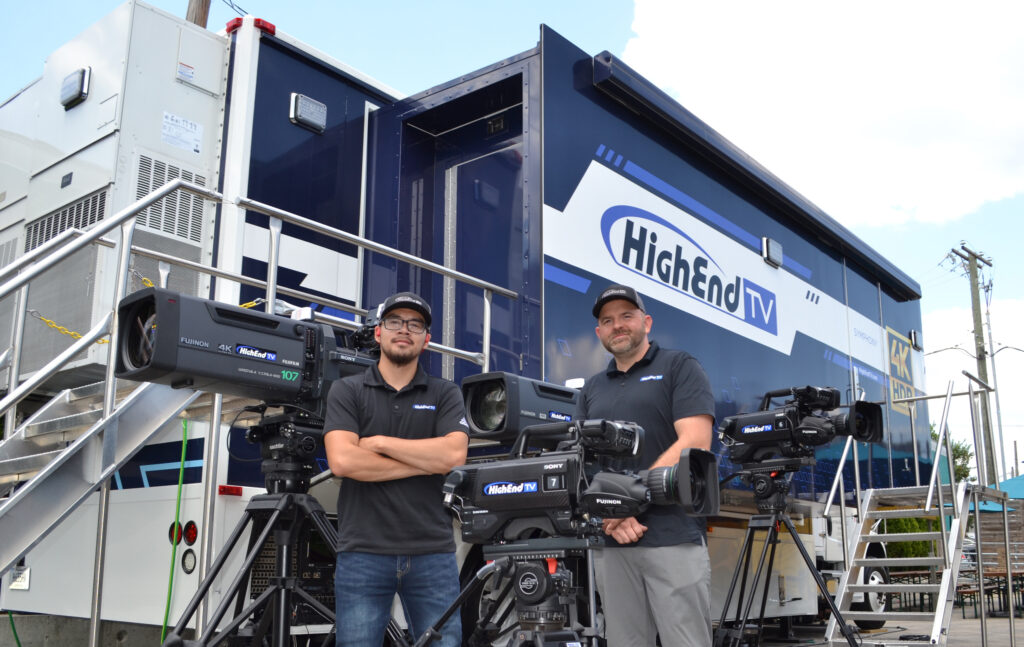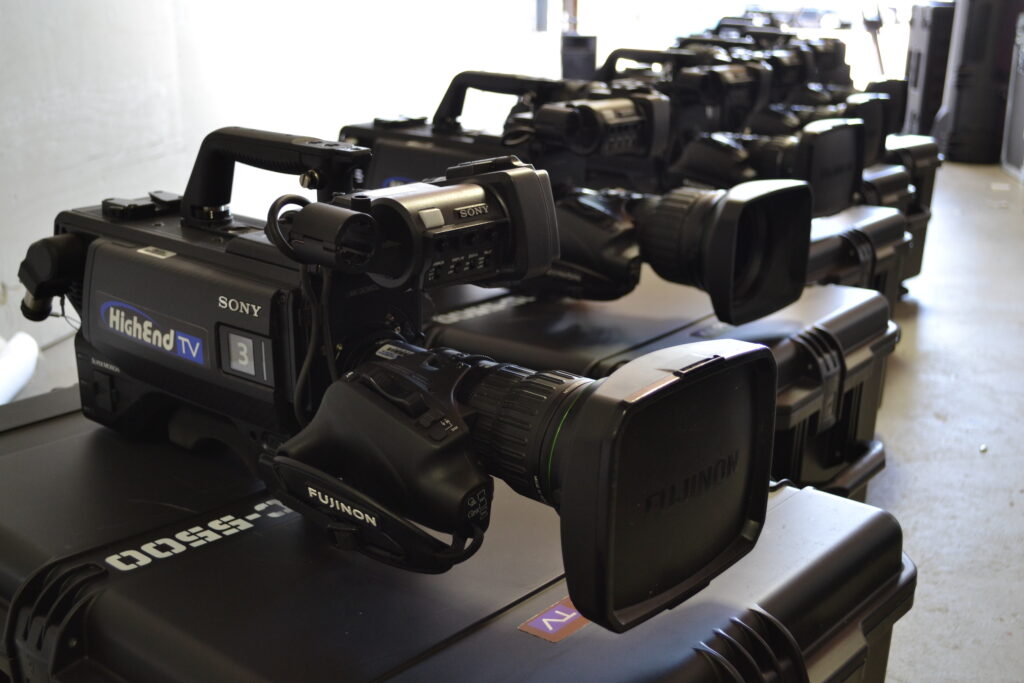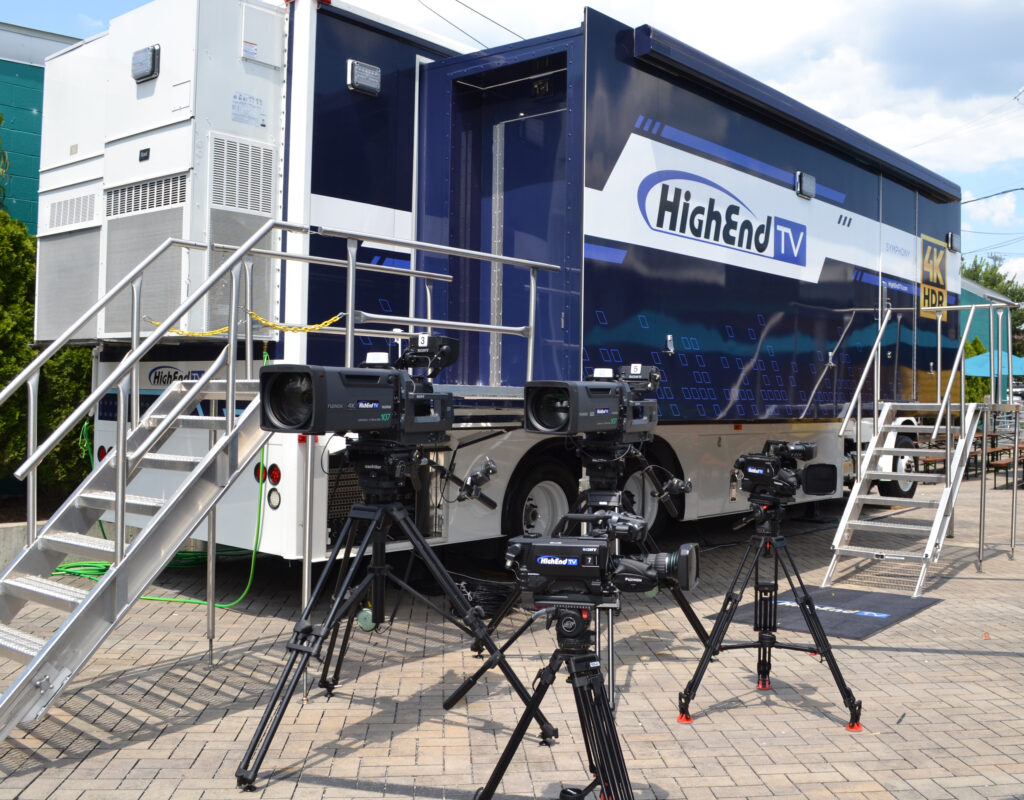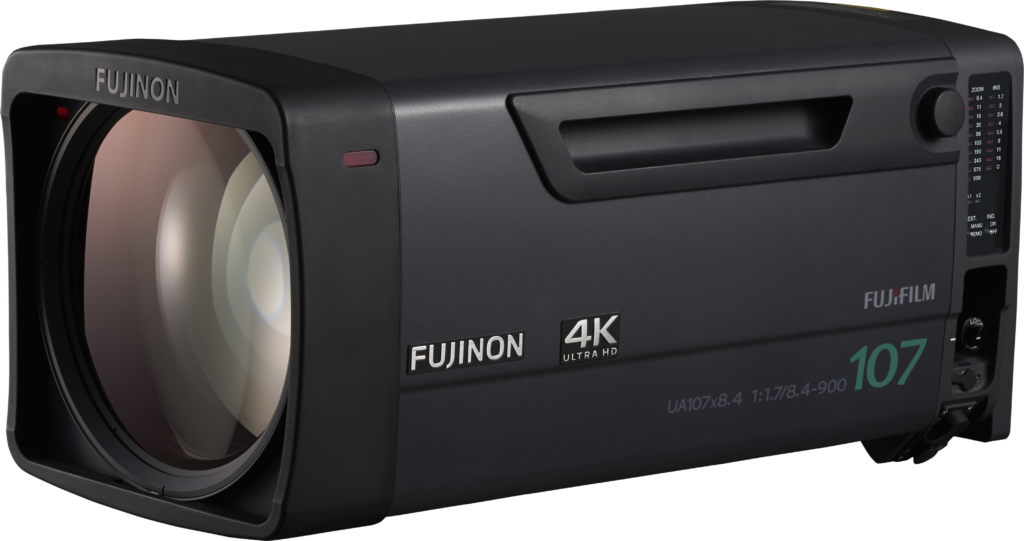Take a look inside High End TV’s 4K HDR production truck – the first of its kind in the US

Production company High End TV recently reaped the benefits of harnessing Fujifilm’s stunning, color-accurate equipment to build Symphony – a mobile production truck offering 4K HDR support throughout the entire pipeline.
High End TV created the first 4K HDR production truck in the US outfitted with Sony HDC-5500 4K cameras and FUJINON 4K lenses with 100% 12G 4K throughput and monitoring. From set to camera to screen, the entire production process enables the crafting of 4K HDR content anywhere the truck can travel.
As a production company, the mission is to deliver your client’s needs while optimizing workflow and staying ahead of the competition. But why would a production company push to go entirely 4K HDR on the road – what is the benefit?
Speaking to TV Technology, High End TV’s production coordinator Adam Mills explained how such a question gave him visions of the past.
“It reminds me of back in the day, when a truck’s entire monitor wall was black & white… for a color broadcast. Likewise, now, so many ‘4K-capable’ trucks have no 4K monitors, no 4K glass, and HDR monitoring is completely impossible.”
Once you see real 4K in HDR, it’s tough to go back to REC.709/1080i. When you bundle HDC-5500 cameras with FUJINON UA glass, magic happens.
On board High End TV’s 4K HDR truck, every piece of equipment is 4K HDR compatible, from monitors to cameras and – of course – FUJINON lenses. There is no guessing in the pipeline process; a seamless workflow requires only employing the correct equipment.
Having 4K HDR compatible cameras and lenses is not enough. High End TV’s 4K HDR truck also uses a Grass Valley Kayenne with K-Frame XP for switching, plus twelve Blackmagic 8K HyperDecks that can record ProRes UHD/HQ in HLG/S-Log3.
High End TV utilizes one of Fujifilm’s highest-resolution 4K broadcast zoom lenses, FUJINON UA107x8.4, to craft footage wherever needed. Adorned with Fujifilm’s UA model moniker, the UA107x8.4 offers 107x zoom range with OIS and 4K optical quality.
Whether you’re crafting footage at 8.4mm or 1800mm with the built-in 2x extender, you’ll make crisp, high-resolution footage, thanks in part to multi-layer coating and extra-low dispersion glass.
The UA107x8.4 can be mounted on any camera with a 2/3-inch mount. Perfect for making 4K HDR content, the optic achieves detailed contrast levels and improved dynamic range. Engineering a lens with such impressive performance is partly thanks to carefully formulated coatings and an intricate design that helps mitigate flaring.
While Symphony’s overture focuses on the UA107x8.4, it offers a range of performance from other Fujifilm broadcast lenses. On board, you can also find FUJINON UA80x9, UA22x7.6, UA18x5.5, and UA14x4.5.

Production houses can better adapt to shooting conditions using a combination of 4K Box and Portable lenses from Fujifilm. Despite the smaller overall footprint, FUJINON Portable lenses deliver perfect 4K footage for news reporting and on-location production.
Such equipment showcases whether a camera operator has focused a shot enough for a 4K broadcast, or the picture was exposed within range for HLG capture. As a director, you’ll want to ensure you can see the most detailed view. Standing behind the camera, it’s reassuring to know you have the best tools for the job.
Adam has noted that, as time continues to pass, he finds more reasons to justify 4K and HDR production with Symphony. When developing content for concerts, he points out that the resolution map of many LED walls far exceeds 4K.
As 4K HDR content increases, there may still be calls for production houses to create 1080p footage. But even when the image needs to be captured at a lower resolution than Symphony offers, the system is flexible.
“Even if a production is intended for HD broadcast,” Adam explains, “a 4K truck in HDR provides a ton of latitude in post, makes for a future-proof program, and will simultaneously produce the best HD picture.”
Regarding whether the production company could step back in time, leaving behind its 4K HDR mobile production truck and FUJINON 4K lenses, Adam has doubts.
“Once you see real 4K in HDR, it’s tough to go back to REC.709/1080i,” he says. “When you bundle Sony HDC-5500 cameras with FUJINON UA glass, magic happens.”
Pushing forward into the world of 4K HDR capture with a mobile production truck wasn’t easy for the High End TV team. In the early stages, the production company had to rely on designing a vehicle based on equipment that did not yet exist.
The staff at High End TV had to work closely with vendors to meet new industry standards and protocols. Along the way, select vendors needed to re-write firmware to improve operability and deliver a seamless 4K HDR experience.

“For 100% 4K and HDR, we are a little ahead of the curve,” Adam speculates. However, even with High End TV pushing the boundaries of modern production, Fujinon has been able to create products that push the company towards its lofty goals.
Adam comments on how the integration of Sony cameras and Fujinon lenses has created a scarcely believable setup.
“Extra-low dispersion glass with fluorite elements, plus ALAC and flare compensation of the cameras, make for the purest, most consistent color I’ve ever seen in a lens family. Add to that breathing and ramping compensation, crazy sharpness, and the huge exposure overhead of HDR – it’s a shader’s dream.”
Combining the hard work of a dedicated production team and top-tier equipment from Fujinon, Sony, and other vendors, High End TV has pushed itself ahead of the production curve.
Fujifilm’s optical offerings don’t end with broadcast, also producing a full line of cinema zoom lenses that far exceed 4K sharpness. The company is focused on its commitment to enabling creators to make content that lives up to reality.
FEATURED PRODUCT

UA107x8.4
4K Premier Series lenses deliver consistent and incredible image quality.

